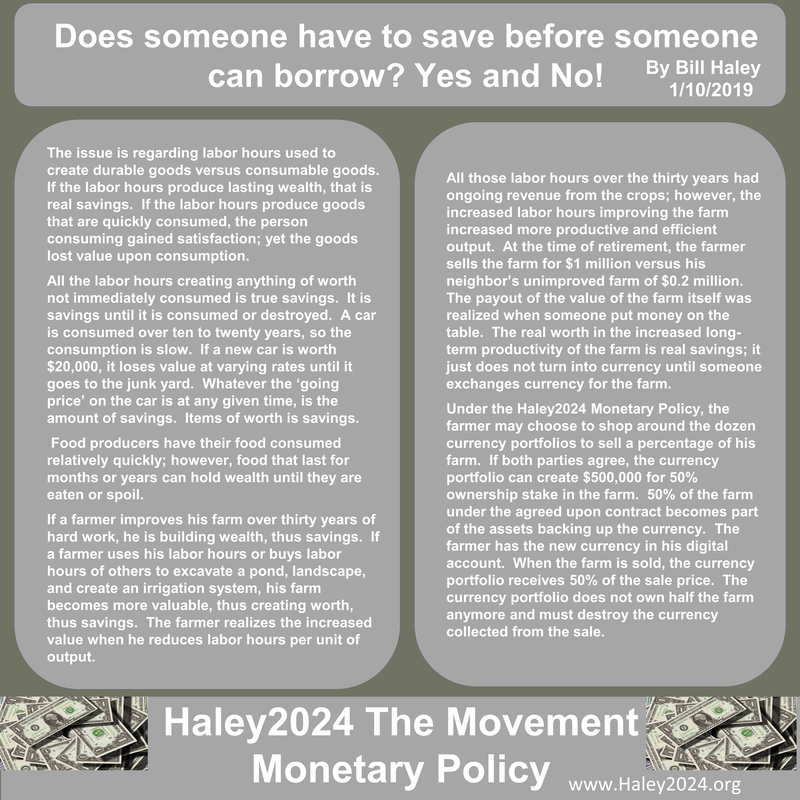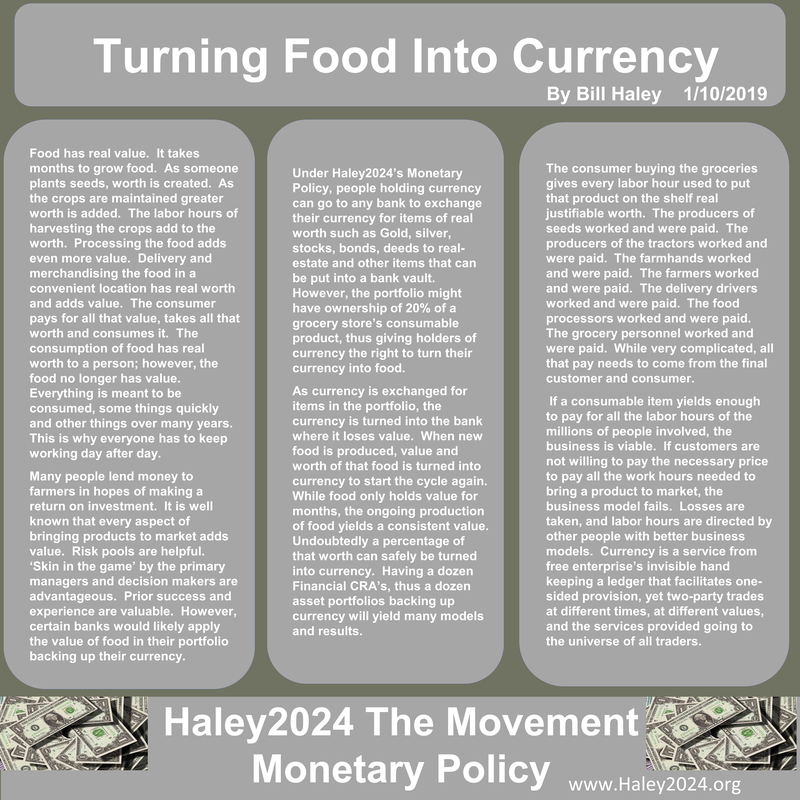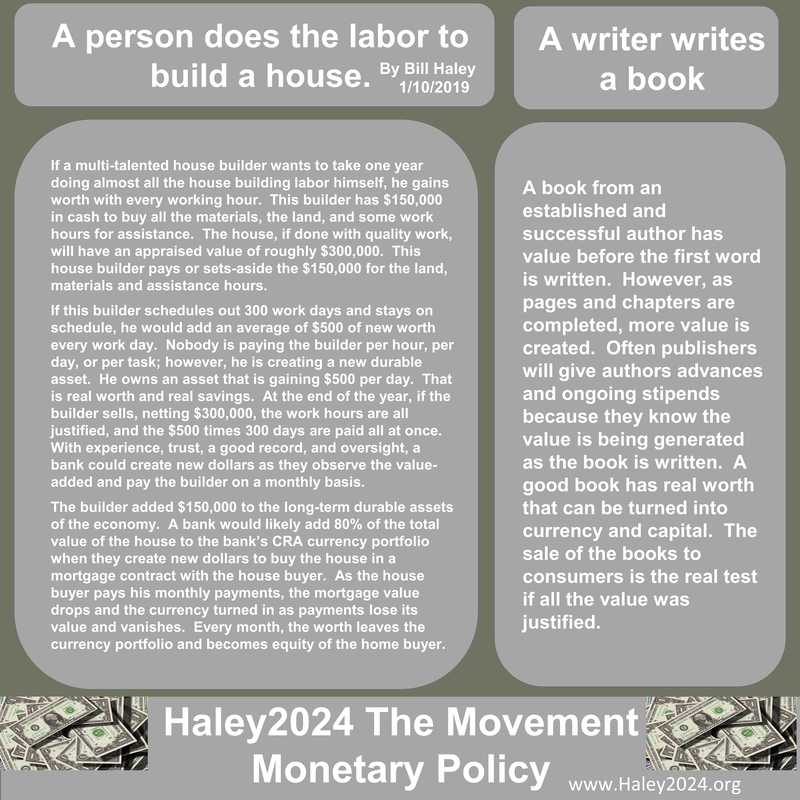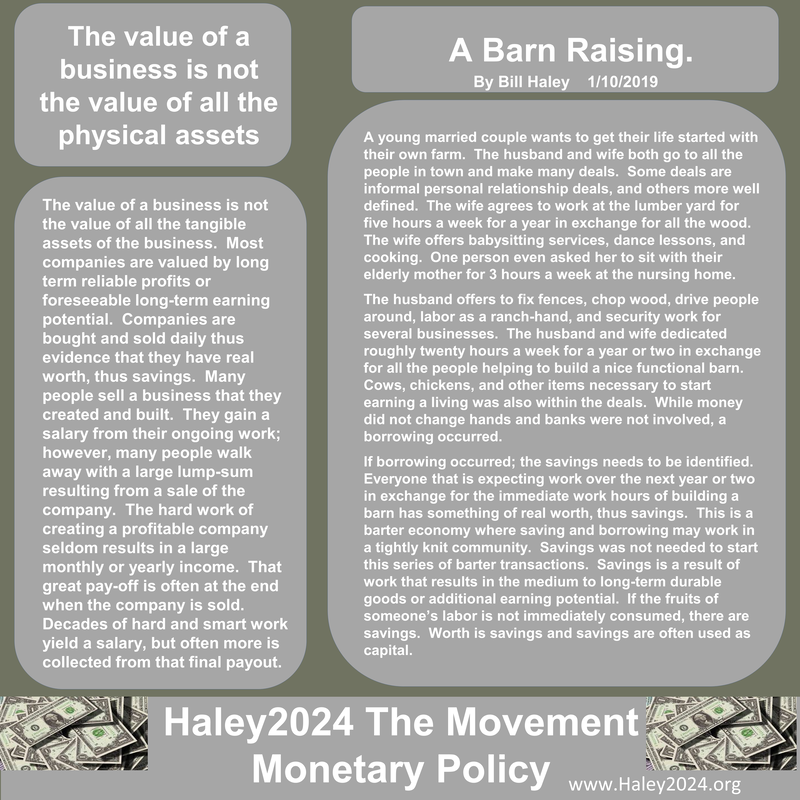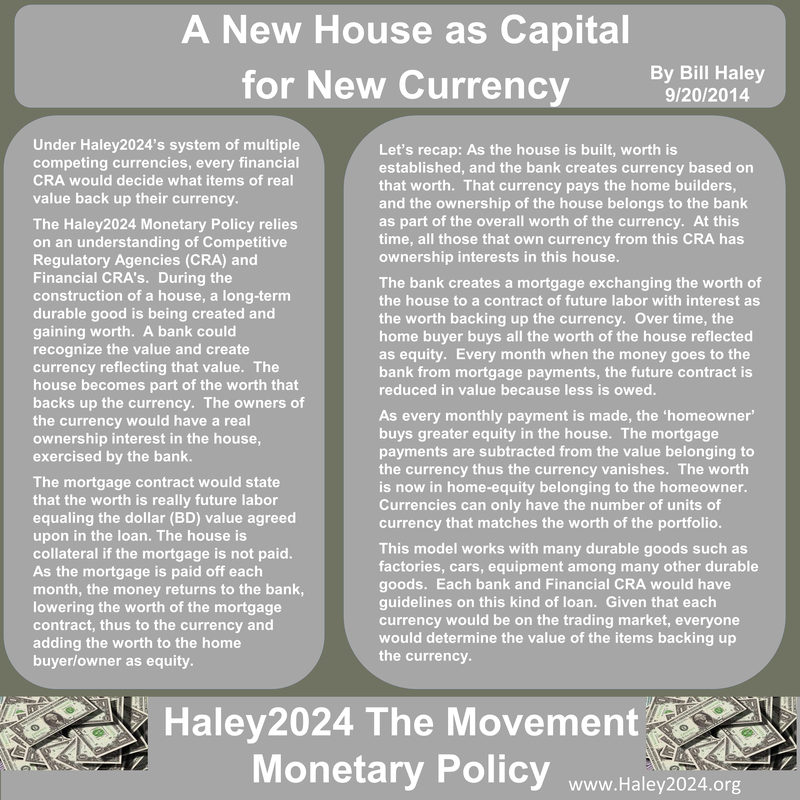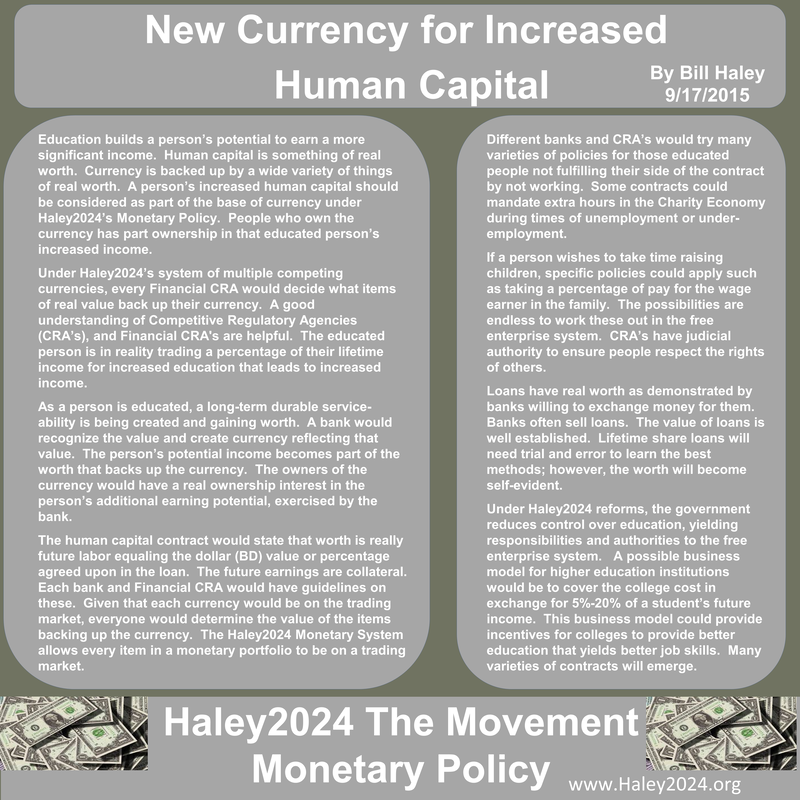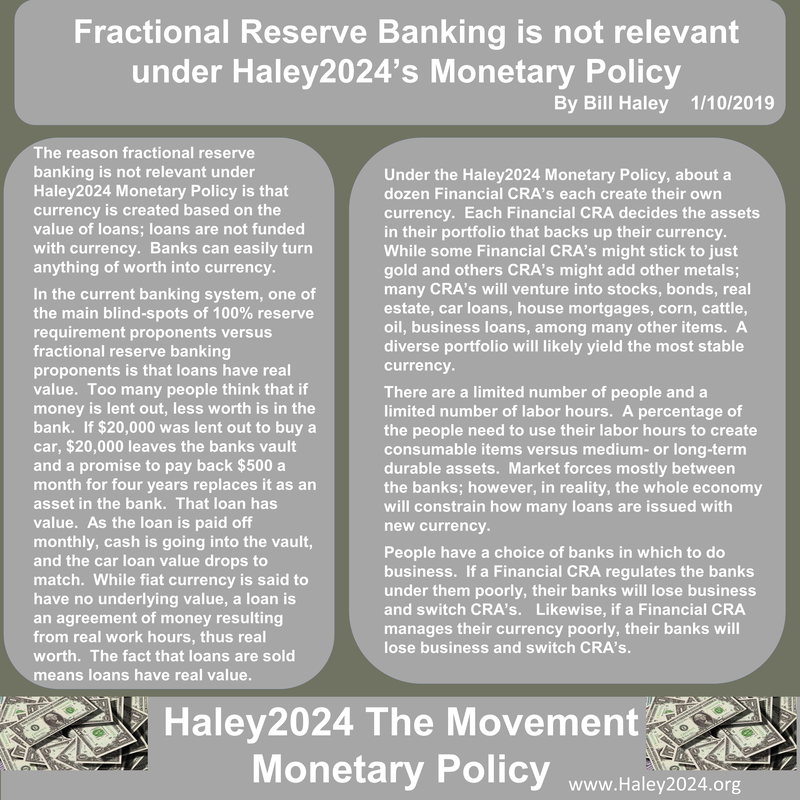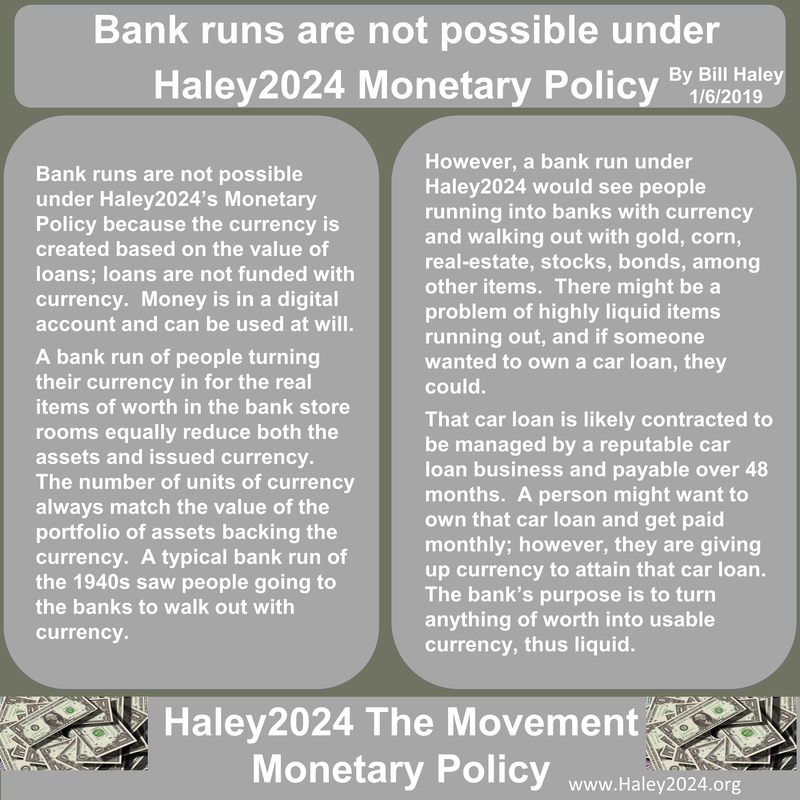| In the current banking system, one of the main blind-spots of 100% reserve requirement proponents versus fractional reserve banking proponents is that loans have real value. Too many people think that if money is lent out, less worth is in the bank. If $20,000 was lent out to buy a car, $20,000 leaves the banks vault and a promise to pay back $500 a month for four years replaces it as an asset in the bank. |
| That loan has value. As the loan is paid off monthly, cash is going into the vault, and the car loan value drops to match. While fiat currency is said to have no underlying value, a loan is an agreement of money resulting from real work hours, thus real worth. The fact that loans are sold means loans have real value. |
| Under the Haley2024 Monetary Policy, about a dozen Financial CRA’s each create their own currency. Each Financial CRA decides the assets in their portfolio that backs up their currency. While some Financial CRA’s might stick to just gold and others CRA’s might add other metals; many CRA’s will venture into stocks, bonds, real estate, car loans, house mortgages, corn, cattle, oil, business loans, among many other items. A diverse portfolio will likely yield the most stable currency. |
| There are a limited number of people and a limited number of labor hours. A percentage of the people need to use their labor hours to create consumable items versus medium- or long-term durable assets. Market forces mostly between the banks; however, in reality, the whole economy will constrain how many loans are issued with new currency. |
